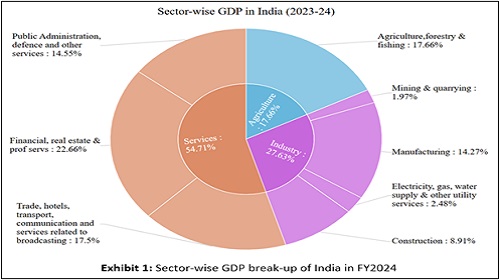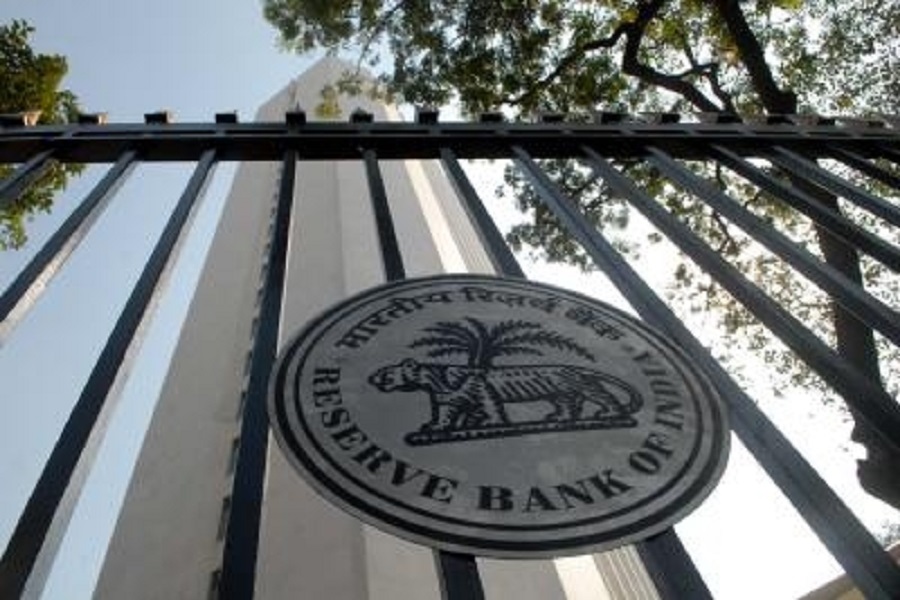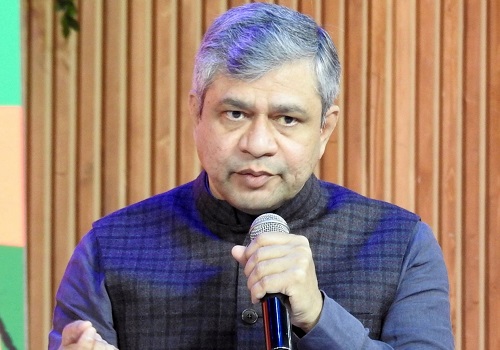$3 trillion opportunity for India in Industry Sector by 2035: Omniscience Capital

According to Omniscience Capital Report, India has potentially a $3 trillion opportunity in Industrial Sector by 2035. The Industrialsector currently accounts for 27.3% of India's GDP, and is expected to increase its share to more than 30% by 2035. By then India’s GDP will potentially reach $10 trillion, giving more than $3 trillion opportunity for Industry sector as compared to $1 trillion now.
The report highlights that India’s Industry sector is expected to outpace Agriculture to take a larger share in the GDP pie ~30%-32% by 2035, driven majorly by manufacturing. While in the last 5 years industrial sector growth was led by Construction which was driven by significant investments in the infrastructure, manufacturing is expected to emerge as the growth leader taking 2/3 share of Industrials and more than 20% share of the GDP by 2035. Higher domestic consumption with increasing per capita income and a target of US$ 1 trillion merchandise exports are expected to drive this growth.

The manufacturing sector is pivotal to India's economic growth, significantly contributing to the nation's GDP. Currently, it stands as one of India's key growth sectors, catering to both domestic and international markets. Government initiatives such as the Production Linked Incentive (PLI) scheme, make in India campaign, liberalized Foreign Direct Investment (FDI) policy, Public-Private Partnership (PPP) models for various public undertakings, and infrastructure development are fueling this growth.
Omniscience Capital also believes that to achieve India's ambitious $1 trillion merchandise export target by 2030, the merchandise exports should increase from the current $450 billion to $1 trillion, requiring a year-on-year growth rate of 12%. India’s share in global merchandise exports has doubled from 0.9% share in 2005 to 1.8% in 2023. India’s merchandise exports have grown at a 3-year CAGR of 18.8% from FY21 to FY24 and a 5-year CAGR of 9.4% from FY19 to FY24.
Ashwini Shami, EVP and Portfolio Manager at OmniScience Capital, “India is poised to continue emerging as a preferred destination for manufacturing investments due to the availability of raw materials, low labor costs, a favorable corporate tax rate for manufacturing, and proactive government support through incentives. The first two phases of India’s transformation through the Amrit Kaal vision focused on building the digital and the physical infrastructure. Phase 1 created a nationwide marketplace with GST, ONDC, UPI, Jan-Dhan accounts, Aadhaar, and affordable telecom. Phase 2, still ongoing, focuses on physical infra through the Gati Shakti initiative to enhance logistics efficiency and future readiness. The third phase of Amrit Kaal will focus on growth of Industrial and Services sectors.”
Omniscience Capital report highlights that the manufacturing sector's expansion will not only contribute to GDP growth but also generate substantial employment, reduce import dependency, and improve trade balances. To realize this potential, the sector must adopt advanced manufacturing technologies, improve supply chain efficiencies through infrastructure development, and foster a conducive business environment.
The Government of India is developing 11 Industrial Corridor Projects under the National Industrial Corridor Development Programme (NICDP) across the country in 4 phases. As of July 31, 2023, the DPIIT has sanctioned and released Rs 9,900 crore for the Industrial Corridor Project, with Rs 9,817 crore already utilized.
Objectives of the 11 corridors
* Global manufacturing hub by developing new industrial cities as greenfield smart cities with advanced infrastructure, incorporating 'plug-n-play' and 'walk-to-work' concepts.
* Attract investments from large industries and MSMEs to achieve $2 trillion in exports by 2030, promoting a self-reliant and globally competitive India.
* Infrastructure Upgradation, Aligns with the PM GatiShakti National Master Plan for multi-modal connectivity, transforming regions into vibrant economic hubs.
* Employment generation, expected to create 1 million direct jobs and up to 3 million indirect jobs, contributing to socio-economic upliftment.

According to the report, the initiative aims to position India as a global manufacturing hub by developing new industrial cities as greenfield smart cities, featuring advanced infrastructure and incorporating modern urban planning concepts such as 'plug-n-play' facilities and 'walk-to-work' environments. It seeks to attract investments from both large industries and MSMEs to drive India toward achieving $2 trillion in exports by 2030, thereby supporting the vision of a self-reliant and globally competitive economy. Aligned with the PM GatiShakti National Master Plan, the program focuses on infrastructure upgradation and multi-modal connectivity, transforming targeted regions into vibrant economic zones. Additionally, it is expected to generate significant employment opportunities, creating around 1 million direct jobs and up to 3 million indirect jobs, thereby contributing meaningfully to the country’s socio-economic development.
Above views are of the author and not of the website kindly read disclaimer




.jpg)





Tag News

M&A and Strategic Deals in the BFSI space rise 3x in CY25 YoY: Equirus Capital













